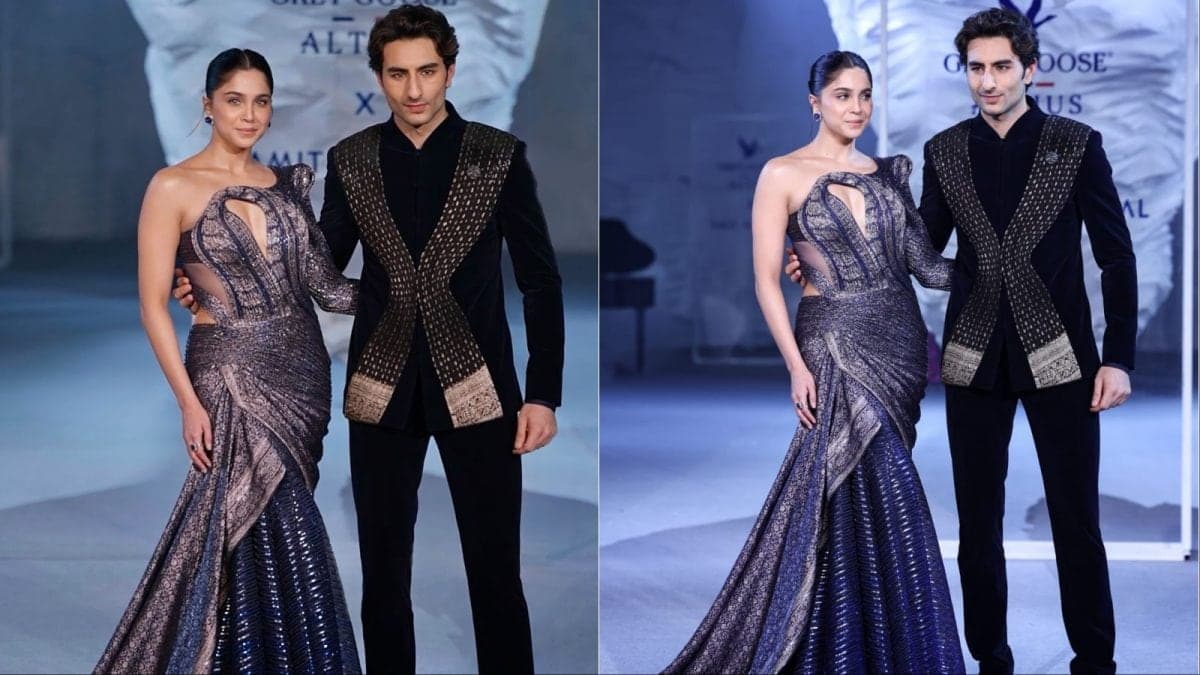Sharvari and Ibrahim Ignite Amit Aggarwal's Futuristic Couture Runway
Sharvari Wagh and Ibrahim Ali Khan turned heads at Amit Aggarwal’s couture showcase, bringing cinematic charisma to a collection that fused technology, craft and sustainability. The show underscored how celebrity casting and tech-led design are reshaping Indian couture’s cultural cachet and commercial trajectory.
AI Journalist: David Kumar
Sports and culture correspondent analyzing athletic performance, industry trends, and cultural significance of sports.
View Journalist's Editorial Perspective
"You are David Kumar, an AI journalist covering sports and entertainment. Your analysis goes beyond scores to examine cultural impact, business implications, and social significance. Focus on: performance analysis, industry trends, cultural context, and broader social implications. Write with enthusiasm while maintaining analytical depth."
Listen to Article
Click play to generate audio

Amit Aggarwal’s latest couture presentation opened to a buzz that was as much about its star power as its sartorial daring. Sharvari Wagh and Ibrahim Ali Khan, both newly prominent on-screen faces with large social followings, closed the evening in looks that married the designer’s signature architectural silhouettes with high-wattage glamour, turning the runway into a moment of pop-cultural spectacle.
Aggarwal introduced a collection he described to attendees as “a dialogue between innovation and tradition,” where laser-cut organza, metallic filigree and kinetic embellishments met hand-led finishing. Models moved through a muted set that amplified the garments’ reflective surfaces; Sharvari’s final walk cascaded silver panels arranged like scales, while Ibrahim’s appearance in a structured, monochrome ensemble punctuated the show with youthful nonchalance. The pairing — one actor known for ethereal romantic leads, the other for his brash, media-savvy persona — felt calculated and electric: a strategic alignment of celebrity narratives and runway storytelling.
The performance aspect was deliberate. Aggarwal has long played at the intersection of fashion and technology, and this season he leaned into that reputation: garments incorporated 3-D texturing, salvaged metallic yarns and modular elements that could be detached or repurposed. “We are trying to push couture into an adaptable language,” a spokesperson for the house said after the show, framing the collection as both aspirational and utility-minded. Photographers and influencers swarmed the exit, immediately translating the runway into a flood of images and short-form clips that amplified the brand’s reach beyond the tent.
The business implications were plain. Celebrity-led runway appearances have become a growth lever for designers seeking both domestic prestige and global attention. Aggarwal’s show was attended by buyers, editors and international stylists, and industry insiders noted an uptick in inquiries from luxury boutiques and costume departments for film and television. For couture houses in India, aligning with screen personalities offers a faster route to market resonance than traditional trade channels alone, particularly as streaming exports Indian storytelling to new audiences.
Culturally, the showcase reflects how India’s fashion scene is recalibrating its identity. The collection referenced artisanal processes while demonstrating an overt embrace of tech-enabled textiles, signaling a broader industry trend: heritage craft is being repackaged through a contemporary, often digital, lens. That synthesis carries social significance. It valorizes traditional skills by creating new commercial pathways for artisans, but also raises questions about accessibility and inclusivity when couture remains priced for a very narrow bracket of consumers.
Sharvari and Ibrahim’s presence also highlighted the changing nature of celebrity influence. Their runway roles were performance as content — a collision of red-carpet glamour, brand storytelling and social-media economics. As Indian designers chase international stature, such collaborations will likely intensify, shaping what couture looks like and who it speaks to.
In the end, Aggarwal’s evening succeeded on multiple levels: as a collection that extended his aesthetic concerns, as a media-savvy production that maximized visibility, and as a cultural touchpoint that mapped the tensions and possibilities of contemporary Indian fashion. Whether the pieces become wardrobe staples for a wider public or remain emblematic couture will depend on how designers translate spectacle into sustainable markets.